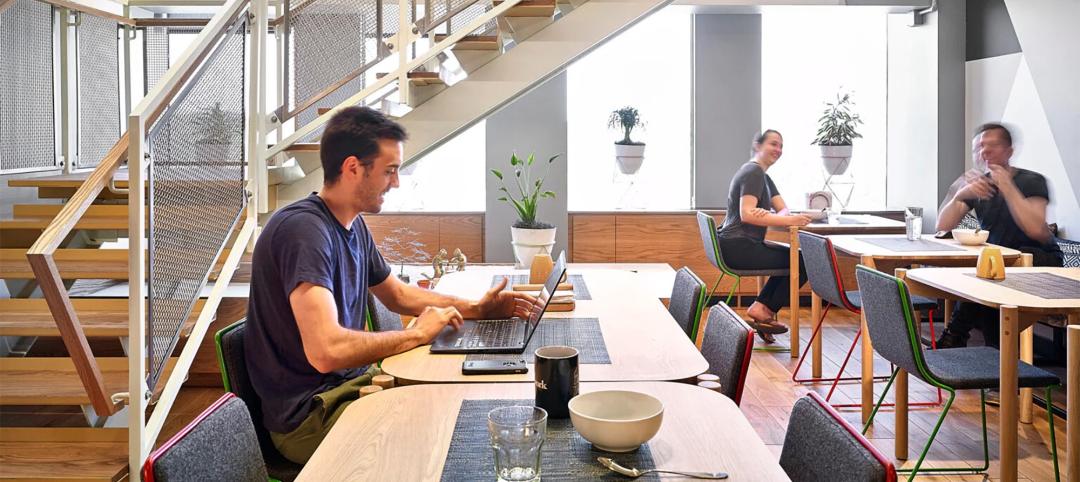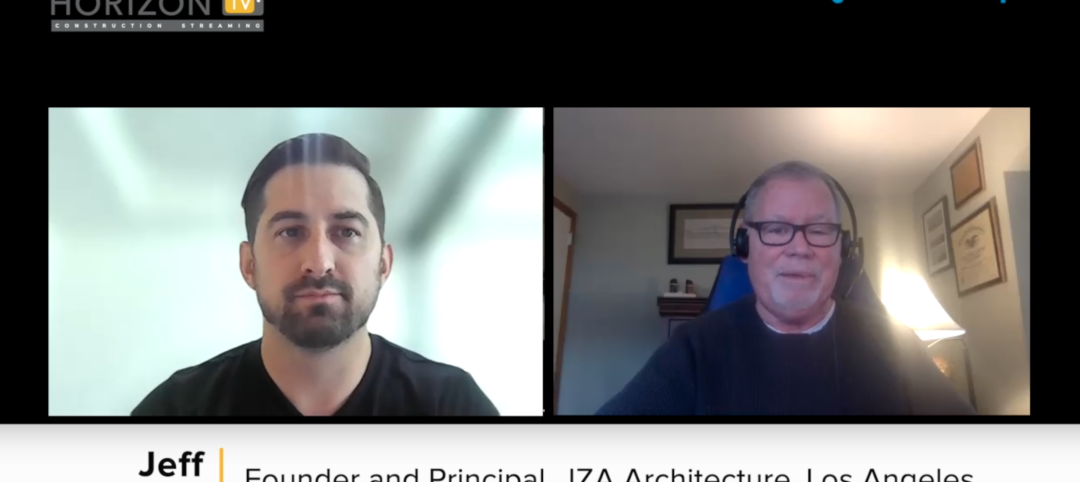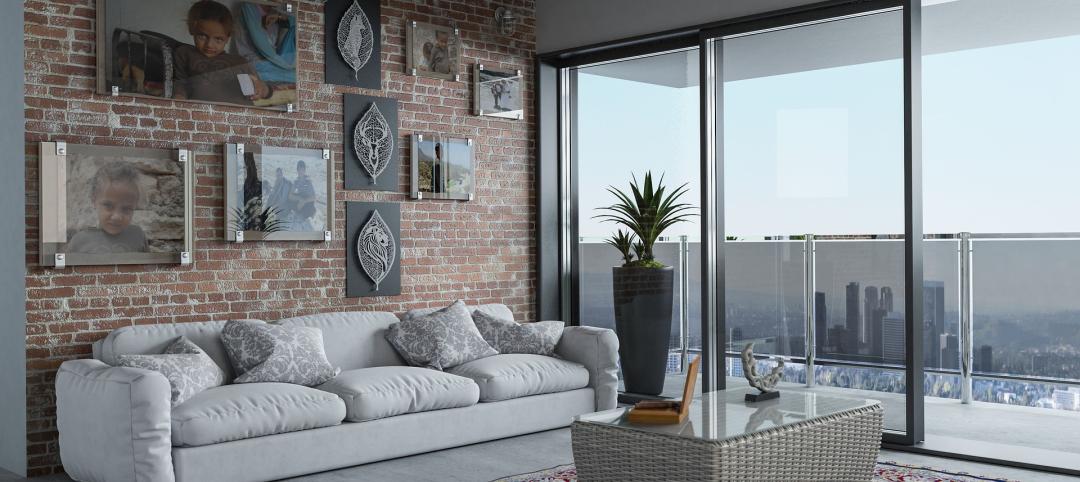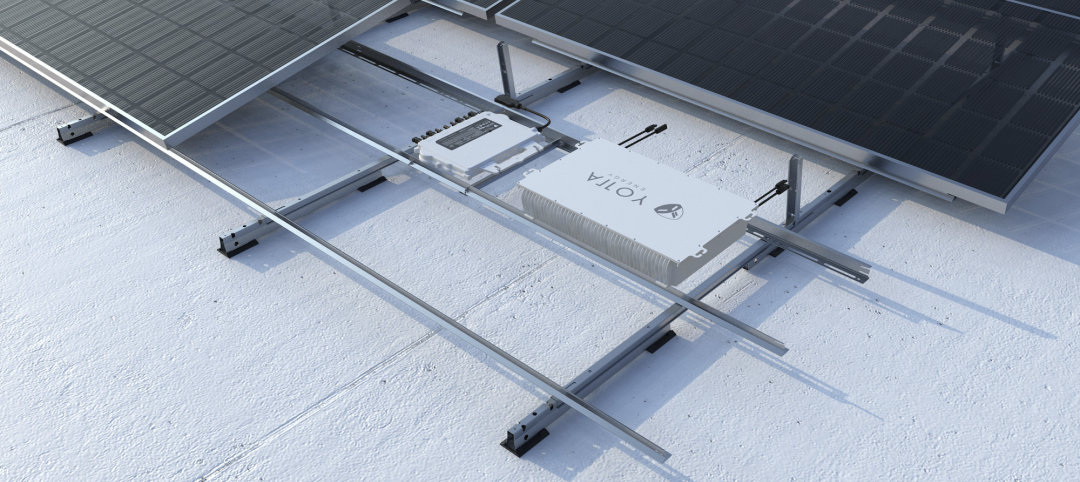While 3D building information modeling (BIM) and digital prototyping have taken away the need for physical shop-built models and created whole new workflows for architects and engineers, clients and authorities with jurisdiction still want physical models to exhibit at planning hearings and show to prospective commercial building tenants or condo unit buyers.
Until recently, most 3D printers cost upwards of $40,000. Burlington, Mass.-based Z Corporation recently introduced the ZPrinter 150 (grayscale only; $14,900) and ZPrinter 250 (CMYK color; $24,900). Compare those prices to Z Corp's own ZPrinter 450, at $45,000.
These new machines are aimed at small architecture studios and firms that want to print their own design iterations to enable closer study of design options while also enhancing communication between project team members and owners. AEC firms can now provide resin-printed 3D color models from any CAD file at greatly reduced cost, due to the lower prices of the latest 3D printers and their associated production materials.
Rather than using polymers or other manufacturing materials, Z Corp's machines use an inkjet printing system based on Hewlett-Packard technology. Here's how it works: A 3D CAD file is imported into the Zeditpro software (included with the printer). The software slices any CAD or BIM file into thin cross-sections and feeds them into the 3D printer. The printer creates the model one layer at a time by spreading a layer of gypsum-based powder and inkjet printing binder into the cross-sections of the model. The process is repeated until every layer is printed.
This is the only 3D printing technology that allows full-color CMYK printing. This method is faster than other additive processes and much, much faster than subtractive prototyping, in which a block of material is carved into shape. Other more costly 3D printing technologies employ either selective laser sintering, which uses heat to fuse metal or plastic elements, or digital light projection, wherein a liquid polymer is exposed to light from a DLP projector under safelight conditions to harden it into a plastic. One printer even uses fused sugar as its printing material.
"Both the ZPrinter 150 and 250 can use any CAD package that can export into the STL file format, and they offer everything the other machines do, just with a smaller package and a little more build time," said Joe Titlow, Z Corporation's VP of product management.
Titlow said the ZPrinter 250 "borrowed a lot" from the ZPrinter 450. "Since the 450 came out in 2007, we've come to understand how to further miniaturize its internal vacuum system, the internal feeder hopper, and its fluid systems, which are self-contained and cartridge-based. All of those technologies have been optimized for this lower-cost package."
One difference between the two generations of printers is that the 250 does not have a side-mounted de-powdering unit with a compressed-air blower, as the 450 does. The resin build material for a 3D model has also gone down in price over the last three years. Powder and binding materials for a Z Corp inkjet-style 3D printer would cost about $3-$5 per cubic inch for a machine owner, according to Impact 3D Models, a Chicago-based 3D modeling company that produces all of its models from a ZPrinter 650. That's down from more than $7 a cubic inch as recently as 2007.
"Everything in the build is variable from project to project," said Matthew Mondo, Impact's VP. "Some models that require more binding material can be more costly, and some shapes require more powder to make." Depending on the complexity of the model, he said, a finished product can run up to $30 per inch, "but it really all depends on what you're looking for."
Mondo said his firm is seeing an uptick in retail layout and MEP modeling work. Clients include TME, a Little Rock, Ark., MEP firm, and construction manager/general contractor Hill International.
Making the file exchange
Three-dimensional geometry is easily transferred from CAD and BIM applications to 3D printers because STL, the file format nearly all of these systems use, is a generic file interchange that many 3D modeling applications can produce and many software packages can consume. Software packages from a wide variety of manufacturers, including AutoCAD, Revit, Solidworks, and Bentley Microstation, can all be easily converted into STL files.
Autodesk has made a free STL exporter for its Revit BIM platform available as a technology preview on its Autodesk Labs testing website. The Revit STL Exporter automates the process of turning a Revit file into an STL file for any of the 2010 Revit family of products (Revit Architecture 2010, Revit MEP 2010, Revit Structure 2010).
Kelcey Lemon, senior technical marketing manager for Building AEC Solutions at Autodesk, said interest in 3D printing among AEC firms is growing, particularly to aid in the visualization and comprehension of design proposal.
Related Stories
Office Buildings | Jun 28, 2023
When office-to-residential conversion works
The cost and design challenges involved with office-to-residential conversions can be daunting; designers need to devise creative uses to fully utilize the space.
Architects | Jun 28, 2023
CSHQA hires first CEO in company's 134-year history
The Board of Directors of CSHQA announced the appointment of Ryan D. Martin, AIA NCARB as Chief Executive Officer.
Multifamily Housing | Jun 28, 2023
Sutton Tower, an 80-story multifamily development, completes construction in Manhattan’s Midtown East
In Manhattan’s Midtown East, the construction of Sutton Tower, an 80-story residential building, has been completed. Located in the Sutton Place neighborhood, the tower offers 120 for-sale residences, with the first move-ins scheduled for this summer. The project was designed by Thomas Juul-Hansen and developed by Gamma Real Estate and JVP Management. Lendlease, the general contractor, started construction in 2018.
Architects | Jun 27, 2023
Why architects need to think like developers, with JZA Architecture's Jeff Zbikowski
Jeff Zbikowski, Principal and Founder of Los Angeles-based JZA Architecture, discusses the benefits of having a developer’s mindset when working with clients, and why architecture firms lose out when they don’t have a thorough understanding of real estate regulations and challenges.
Apartments | Jun 27, 2023
Average U.S. apartment rent reached all-time high in May, at $1,716
Multifamily rents continued to increase through the first half of 2023, despite challenges for the sector and continuing economic uncertainty. But job growth has remained robust and new households keep forming, creating apartment demand and ongoing rent growth. The average U.S. apartment rent reached an all-time high of $1,716 in May.
Apartments | Jun 27, 2023
Dallas high-rise multifamily tower is first in state to receive WELL Gold certification
HALL Arts Residences, 28-story luxury residential high-rise in the Dallas Arts District, recently became the first high-rise multifamily tower in Texas to receive WELL Gold Certification, a designation issued by the International WELL Building Institute. The HKS-designed condominium tower was designed with numerous wellness details.
University Buildings | Jun 26, 2023
Addition by subtraction: The value of open space on higher education campuses
Creating a meaningful academic and student life experience on university and college campuses does not always mean adding a new building. A new or resurrected campus quad, recreational fields, gardens, and other greenspaces can tie a campus together, writes Sean Rosebrugh, AIA, LEED AP, HMC Architects' Higher Education Practice Leader.
Standards | Jun 26, 2023
New Wi-Fi standard boosts indoor navigation, tracking accuracy in buildings
The recently released Wi-Fi standard, IEEE 802.11az enables more refined and accurate indoor location capabilities. As technology manufacturers incorporate the new standard in various devices, it will enable buildings, including malls, arenas, and stadiums, to provide new wayfinding and tracking features.
Green | Jun 26, 2023
Federal government will spend $30 million on novel green building technologies
The U.S. General Services Administration (GSA), and the U.S. Department of Energy (DOE) will invest $30 million from the Inflation Reduction Act to increase the sustainability of federal buildings by testing novel technologies. The vehicle for that effort, the Green Proving Ground (GPG) program, will invest in American-made technologies to help increase federal electric vehicle supply equipment, protect air quality, reduce climate pollution, and enhance building performance.
Office Buildings | Jun 26, 2023
Electric vehicle chargers are top priority for corporate office renters
Businesses that rent office space view electric vehicle (EV) charging stations as a top priority. More than 40% of companies in the Americas and EMEA (Europe, the Middle East and Africa) are looking to include EV charging stations in future leases, according to JLL’s 2023 Responsible Real Estate study.

















